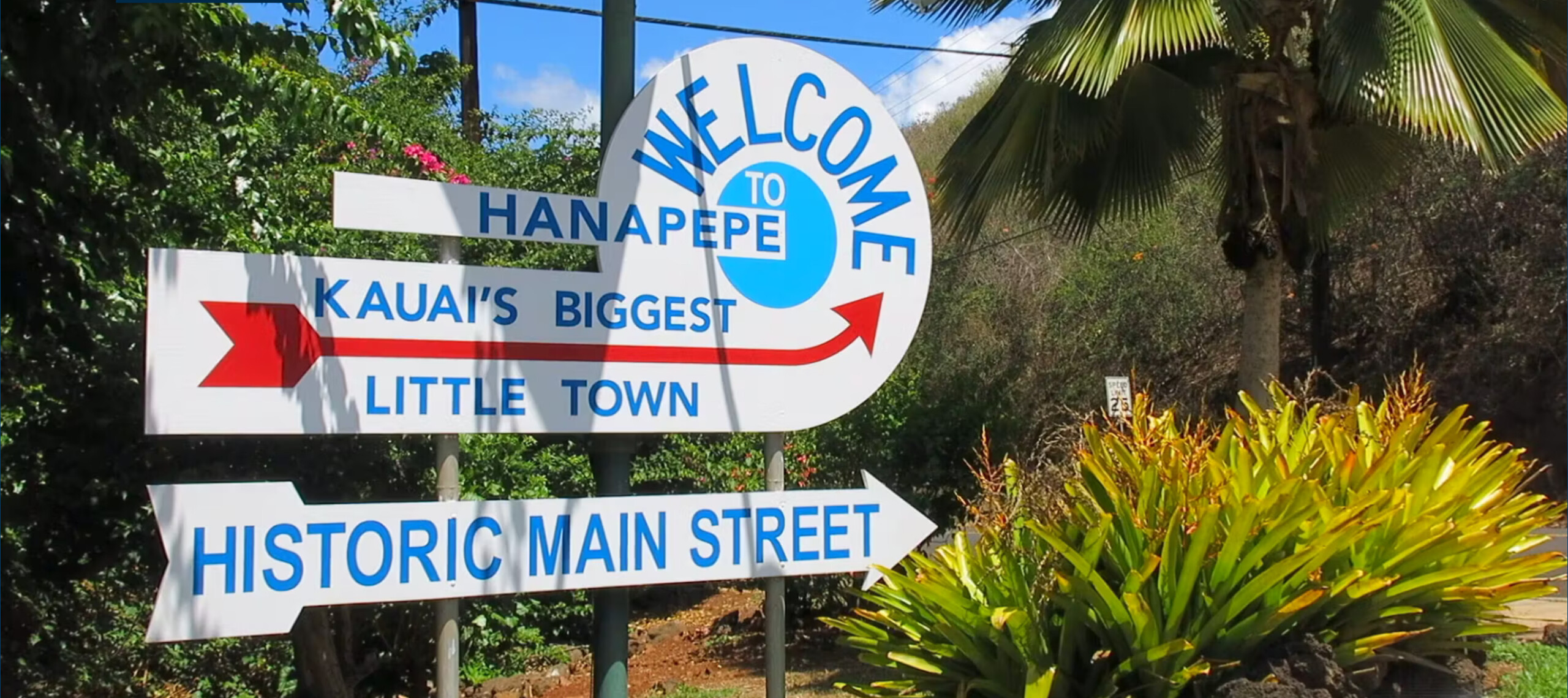By Tommy Noyes

Kapa‘a High School senior and Earth Club president Shasta White helps Mike DeMotta, National Tropical Botanical Garden’s head curator for living collections, unload donated native Hawaiian plants for the community workday at the Kawaihau Elevated Boardwalk. Photo by Tommy Noyes
A typical question submitted to Kaua‘i Path’s website is, “Aloha! Is there a current map for the completed bike path, especially showing how to navigate from Wailua Beach to Kapa‘a downtown?” Yes; see the KauaiPath.org FAQ.
Mayor Bernard Carvalho Jr. has expressed his commitment to seeing Ke Ala Hele Makalae completed in Waipouli. That means construction of the path in Waipouli should be active or finished by the end of 2018.
The Kawaihau Boardwalk was blessed on July 24, and recently volunteers beautifying their neighborhood planted native Hawaiian plants along the boardwalk. That completed spur is part of the same phase of path construction as the Waipouli connection. Why is it taking so long to get the path built in Waipouli?
Federally funded projects require an environmental process. An Environmental Assessment is required for each phase of the Ke Ala Hele Makalae. On Sept. 13, County Attorney Mauna Kea Trask testified before the Kaua‘i County Council, reviewing the detailed cultural process followed in the Waipouli path matter. Excerpts from Mr. Trask’s presentation follow.
“Section 106 of the National Historic Preservation Act requires the county to take into account the effects of their undertakings on historic properties, and afford … a reasonable opportunity to comment.
“The regulations place major emphasis on consultation with Native Hawaiian organizations. Consultation … must respect tribal sovereignty and the government-to-government relationship between the federal government and Indian tribes. Consultation with Native Hawaiian organizations is more amorphous because of the lack of federal recognition of Native Hawaiian peoples as the indigenous sovereign people of Hawai‘i. This always makes 106 consultation difficult for governmental agencies at all levels.
“The County of Kaua‘i embraced this challenge and met with the Native Hawaiian community to create a process that … would be both legal under federal and state law, and culturally appropriate according to Native Hawaiian traditions and cultural practices.”
Ho‘oponopono as described in Nana I Ke Kumu, Vol. I was revived for this consultation. As stated by Mr. Trask, the Native Hawaiian Community appointed cultural practitioner Aunty Cheryl Mary Ululani Lovell-Obatake as Po‘o, and she lead the entire process. Aunty Sharon Pomroy was appointed Alaka‘i to act in her absence should it be necessary. Neither Aunty Cheryl nor Aunty Sharon was a consultant, and they were not paid for their leadership. At the decision of the community, the county turned over leadership of the process to them. At Aunty Cheryl’s request, both the Office of Hawaiian Affairs and the county provided administrative support. The ho‘oponopono began in May 2012 and after eight meetings, concluded in December 2013.
From Mr. Trask’s testimony, ultimately the Native Hawaiian community supported this process because it was a Hawaiian process run by Hawaiians and not by an off-island consultant. The community agreed that if any individual, Hawaiian or not, public, private or government didn’t have respect for this process, then the kapu would be broken, and therefore — any laws aside — that entity would be shown to have no respect for the culture. This was recognized to be infinitely worse than some state or federal regulation.

Tommy Noyes
The process was attended by Native Hawaiians, Native Hawaiian organizations (OHA, Kaua‘i & Ni‘ihau Island Burial Council, etc.), members of the public and governmental agencies.
By the spring of 2014, the EA was finalized, and the county requested that the State Historic Preservation Division concur. More than three years later, SHPD has not yet responded, and so as of this writing, key segments of the Waipouli connection remain stalled.
A path may lead to many destinations. Ke Ala Hele Makalae is leading to planting Native Hawaiian plants while reviving healing Native Hawaiian traditions.
- Tommy Noyes is Kaua‘i Path’s executive director, a League of American Bicyclists Certified Instructor and active with the Kaua‘i Medical Reserve Corps.
Discover more from ForKauaiOnline
Subscribe to get the latest posts sent to your email.





Leave a Reply